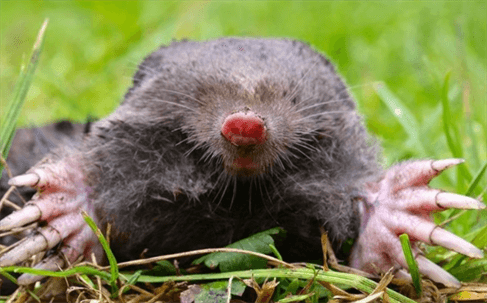Wildlife management and pest control in San Diego County are more vital than people realize. Insects and creatures can quickly infiltrate your lawn and home. Having appropriate defenses is the only way to prevent their often swift destruction. Creepy crawlers can wreck structures, individual belongings, and then some. On top of that, they can introduce illnesses and injuries. Moles, for instance, are prevalent in the area and are big trouble.
The average person knows little to nothing about moles. Continue reading to learn about their behaviors and risks. You can also get details on deterrence and elimination approaches. Some folks try “do it yourself” techniques, but this isn’t the best way to control moles in your yard. HomeShield Pest Control provides quality local wildlife removal.
Why Are Moles Drawn To Lawns?
Lawns are attractive to moles in San Diego County because of the rich soil and abundance of pests. Among the critters they eat are spiders, grubs, earthworms, crickets, snails, and beetles. Some might even devour mice, though not as commonly. When moles are in residential neighborhoods, they’ll gravitate to gardens especially.
Mole Holes: Signs Of The Pesky San Diego County Invaders
If you go outdoors and see your lawn unexpectedly tousled, moles may be around. These animals actively dig tunnels for procreating and feeding. Burrows for nesting are much deeper than those intended for capturing prey. Trails and piles of dirt will be widespread in the wake of moles. Should your domicile have or be in the vicinity of such locations, an infestation is probable:
- Spots with moist and loose soil that’s healthy.
- Parks
- Fields
- Wooded zones
- Golf courses
It can’t be emphasized enough how pertinent mole control is. They are so damaging that you could experience difficulties mowing the grass and maintaining your land overall. Farming and keeping food-bearing greenery will be a battle. The creatures attack roots and bulbs, leading to the death of many plants. In addition, utility disasters can arise.
Moles often affect pipes and similar beneath the ground. Look for all of these indicators if you suspect their presence. Their one saving grace is that they’ll be too busy with their earthy lairs to harm humans directly.
How To Tell The Difference Between Moles And Gophers
North American moles are 5 to 7 inches long; males are typically larger. They have a thick build and weigh about 2 ounces. Dark brown fur that is silky covers them. Rather small eyes and ears surround their pronounced snout. Further, they have short tails that are hairless, round claws, and massive front feet.
Gophers in San Diego County are 5 to 14 inches long and roughly 2 pounds. The coloring of their fur varies; they could be white, brown, or black. While they also have tiny facial features, their claws are more extensive. One reason it’s unwise to perform wildlife trapping on your own is that you might inadvertently mistake these animals for each other. In many cases, eradication methods are specific to the species.
Professional Nuisance Wildlife Control For San Diego County Homes
Confusing or misidentifying pests isn’t the only caveat to doing mole management by yourself. Most pesticides and adjacent products are not fashioned for prolonged use or addressing infestations. They might be noxious to people, domestic animals, and vegetation. They usually have strong chemicals, and their complicated instructions can result in dangerous misapplication. Last but not least, their pricing can be high.
We at HomeShield Pest Control are wildlife experts. Our affordable treatments are advanced but still safe and humane. Our solutions include carbon monoxide extermination gas, baiting formula, and chemical-less methods. Get a free quote when you call today!

